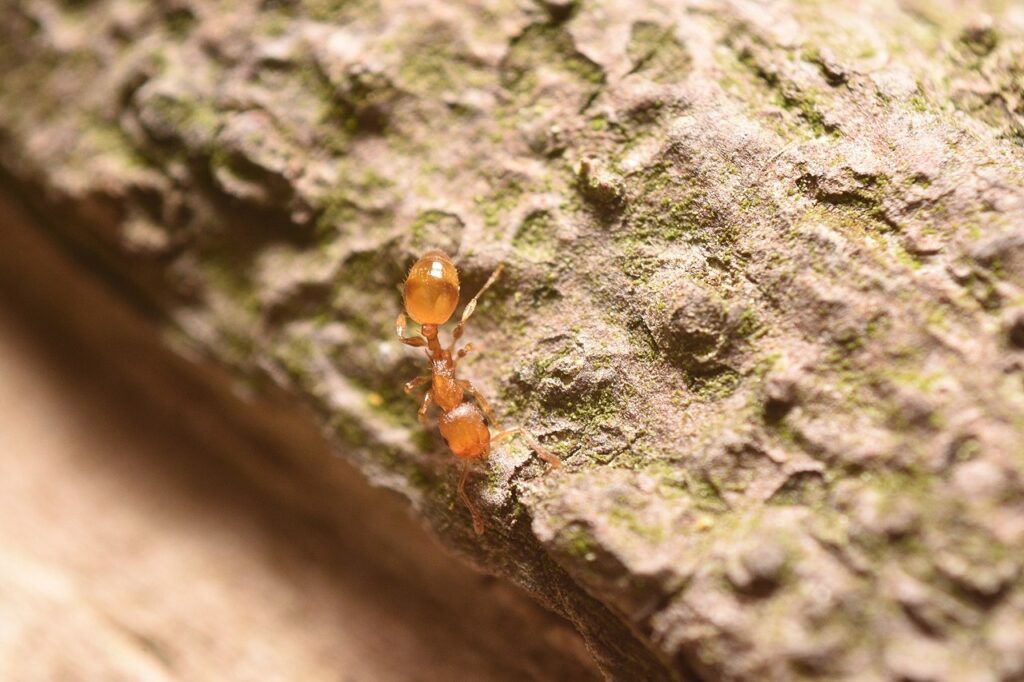
Appearance of Thief Ants
Thief ants (Solenopsis molesta) are tiny, measuring only 1/16 inch long. They are typically yellow to light brown or orange in color. Their small size allows them to infiltrate food containers and structures where larger ants cannot. Unique among household ants, thief ants do not consume sugar; instead, they prefer foods high in fats, making them particularly challenging to deter.
Thief ants earn their name from their behavior of stealing food and even larvae from other ant species, such as Pharaoh ants. They are often found in kitchens, pantries, and other areas where food is stored.
Control
Understanding their Habits
Thief ants tend to nest outside, making them more likely to create a barrier around homes a crucial part of control measures. Their nesting behavior can vary with the season; while they can nest indoors year-round, they are more likely to establish colonies inside during hot weather.
Control Strategies for Thief Ants
- Outdoor Nesting: Since thief ants frequently have nests outside, it’s essential to establish a barrier around your property. This may involve applying pest control treatments around the perimeter of your home to prevent them from entering.
- Pesticide Use: Effective pesticide treatments can significantly reduce thief ant populations. It’s vital to follow label instructions and, if necessary, consult a pest control professional for targeted application.
- Locate and Follow Trails: Thief ants create trails to food sources, which can sometimes be traced back to their nests. While challenging, tracking these trails can be beneficial for identifying their nesting sites.
- Focus on Food Sources: Thief ants are attracted to kitchens and pantries. Ensure food is stored in airtight containers, and keep surfaces clean to minimize potential food sources. Pay special attention to areas around sinks and moisture sources, as they are often drawn to these locations.
- Residual Dust Treatment: Utilize residual dust in natural voids such as under kitchen cabinets or wall cavities. This treatment can help eliminate hidden colonies, ensuring that both adults and larvae are targeted.
General Ant Information
Ants are among the most numerous terrestrial animals globally, thriving in various environments from deserts to arctic regions. Their success can be attributed to their social structure, communal behavior, and adaptability to different climates and soil types.
Ants possess a complex life cycle, including stages from egg to larva to pupa before reaching adulthood. Within a colony, ants are divided into three primary castes: workers, males, and queens. Workers are responsible for various tasks, including foraging for food, caring for the young, and maintaining the nest. Males are primarily focused on mating, while queens are dedicated to reproduction.
Understanding the biology and habits of thief ants is essential for effective control and prevention. Homeowners can reduce the risk of infestations and maintain a pest-free environment by implementing strategic measures. If you suspect an infestation, contact Traffic Pest Solutions for expert assistance and effective pest control solutions.
